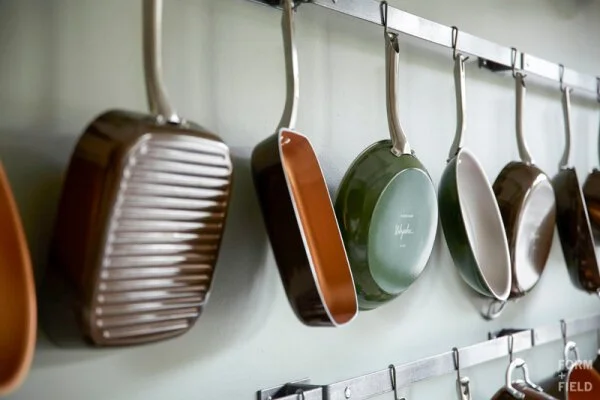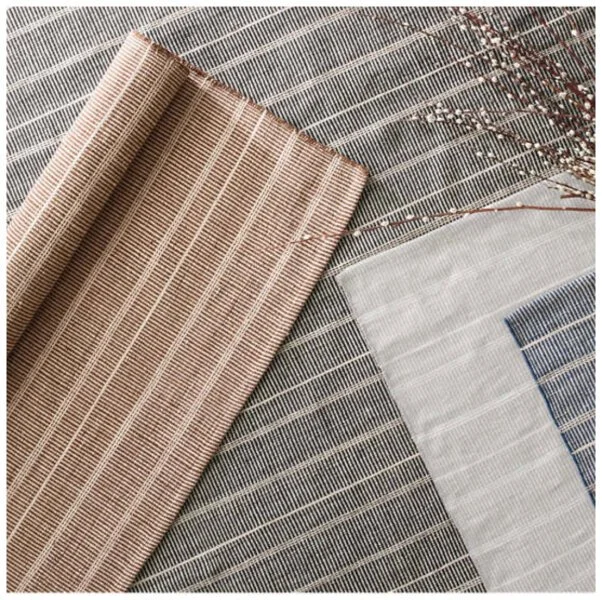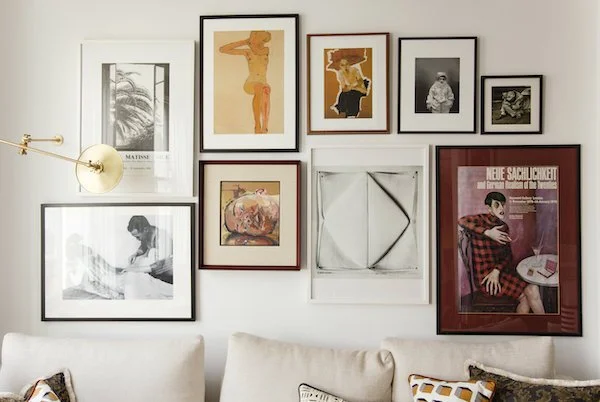RED, ORANGE, + YELLOW
For the third post in our Impact of Color Series, we’re going to dive into three of the most controversial and contradictory colors: red, orange, and yellow. We’ll share these colors’ history, how they’re perceived today, and an example of each in interior design.
BLACK, WHITE, + GRAY
For the second post in The Impact of Color Series, we’re going to dive into black, white, + gray, or what are commonly known as neutrals. In interiors, you might see beiges and nudes listed as neutrals, but these are technically “tints,” colors that have white added to them.
True neutrals are defined as white, black, and the full spectrum of grays in between. Keep reading for more about all three.
ETHICAL LABOR CONDITIONS
For the final post in our Sustainability series, let’s talk about the human element: the people whose hands and labor go into creating the items we incorporate into our living spaces.
THE IMPACT OF COLOR SERIES / INTRODUCTION
Our newest series is dedicated to a topic that affects every aspect of our daily lives - COLOR. Over the next several months, we’re going to talk about the history of color, the way we perceive color, how it affects us, and how it influences our interiors.
RECYCLED AND | UPCYCLED PRODUCTS
Are you ready for the fourth installment of our Sustainability + Interiors series? We’re going to dive deeper into the concept of ethically sourced materials and focus on upcycling and recycling. What could be more sustainable than using old, discarded materials to create something new and beautiful?
MARCO ZANUSO
Zanuso’s work was characterized by a willingness to combine technology and industrialization with elegant, modern designs. He was known to experiment with materials that could be reproduced more easily than traditionally handcrafted designs.
HOW TO CREATE A | VOCS-FREE ENVIRONMENT
In our first Sustainability Series post, we introduced volatile organic compounds, or VOCs. These are compounds that release toxic gasses (called off-gassing) into the air we breathe. VOCs are widely present in common household furnishings and materials.
For our fourth post, we’re exploring some actionable ways to avoid VOCs in your home and replace them with safer, friendlier options.
JORGE ZALSZUPIN
Though originally from Poland, Jorge Zalszupin moved to Brazil following World War II. His story is one of beautiful timing, arriving in the country at the exact moment that Oscar Niemeyer was seeing success with modern architecture.
Zalszupin’s furniture designs fit perfectly with Niemeyer’s architectural ones, and a collaboration between the two artists quickly sent Zalszupin down the path to a long and successful career.
FORM + FIELD | HOLIDAY GIFT GUIDE 2019
The third annual gift guide is here! We often get asked about where we find art for our projects, so this year our gift guide focuses on our favorite, approachable sources for starting an art collection.
VILHELM LAURITZEN
Lauritzen’s design style adhered to classicism until the 1930s, when his travels through Central Europe introduced him to the concept of functional architecture, the idea that design should be based, first and foremost, on function.
JEAN ROYÈRE
Jean Royère’s professional career did not start in design. He was in the import-export trade industry when he felt called to learn cabinetmaking. The rest is history.
GIUSEPPE SCAPINELLI
Scapinelli was born in Modena, studied architecture in Florence, and then eventually moved to São Paulo, where he opened the design studio that would launch his career, Atelier Scapinelli.
Like Brazilian designer Sergio Rodrigues, Scapinelli not only embraced the typical woods of the region — jacaranda, imbuia, rosewood — but his modern designs also suggest influences of Brazilian culture.
TEXTILE PRODUCTION
We’re excited to kick off a new series on sustainability and what it means for interiors! In our first installment, read on for thoughts on how to consider sustainability for yourself.
SAM MALOOF
Sam Maloof was born in Chino, California with a natural talent for woodworking.
Following his service in the army during World War II, Maloof earned a position at a local college art department, where he began designing and crafting furniture. When his creations appeared in Better Homes & Gardens magazine and the LA Times, the custom orders came flooding in and never stopped.
SUSTAINABILITY SERIES / INTRODUCTION
We’re excited to kick off a new series on sustainability and what it means for interiors! In our first installment, read on for thoughts on how to consider sustainability for yourself.
SERGIO RODRIGUES
Sergio Rodrigues’s modern designs epitomize the relaxed lifestyle of his native Brazil.
After studying architecture and design in Rio de Janeiro, Rodrigues introduced Brazil to modern design, opening its first modern art and furniture store. Two years later, he founded a firm called Oca to design modern furniture himself.
ALL ABOUT TADELAKT
Tadelakt has been steadily gaining popularity in the design world in recent years, but what exactly is this wall finish all about? While relatively unknown in the United States, tadelakt has been used in Moroccan architecture for centuries, and is perhaps most well-known for its presence in traditional hammam baths. This wall finish is favored now for its natural materials and organic look, and is most commonly used in showers or baths.
EVA ZEISEL
Eva Zeisel is a Hungarian-American designer whose incredible 105-year life took her through several countries, a World War, and into the history books of modern design.
POUL KJÆRHOLM
Poul Kjærholm is most known for bringing the use of steel into modern design, but surprisingly, his career started as a carpenter’s apprentice. It wasn’t until the early 1950s that Kjærholm studied under renowned designer Hans Wegner and Jørn Utzon (an industrial designer) at Copenhagen’s School of Arts and Crafts.
JACQUES ADNET
Jacques Adnet and his twin brother, Jean, received their artistic education at the École des Arts Décoratifs in Paris in 1916.
Adnet’s work was largely inspired by the popular Art Deco style of the early era. He used it to update traditional furniture in new ways and placed heavy emphasis on materials like leather, metals, mirror, and woods.




















